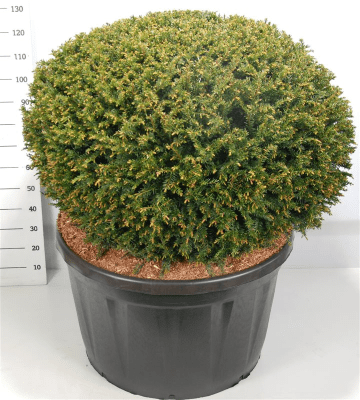
Taxus baccata
Ball
F00003793
Origin
The Ginkgo biloba Princeton Sentry, also known as the Japanese nut tree, is a cultivar of the Ginkgo biloba and originated in China. Fossils indicate that this species has existed for over 200 million years, making it one of the oldest living tree species on earth. The name 'Princeton Sentry' derives from the location where this cultivar was first grown, namely Princeton University in New Jersey, United States.
Characteristics
The Ginkgo biloba Princeton Sentry is known for its columnar shape and striking autumn colouring. Characteristic of this tree are the fan-shaped, bilobate leaves that turn a beautiful golden yellow in autumn. The tree can reach heights of about 15 to 20 meters and has a width spread of approximately 3 to 6 meters. The Princeton Sentry generally does not produce fleshy seeds, which in the original Ginkgo biloba can emit an unpleasant smell.
Care
The Ginkgo biloba Princeton Sentry prefers a sunny to semi-shade location and a well-draining soil. Regular fertilisation and periodic pruning to maintain the shape are recommended, but the plant is generally very low-maintenance and resistant to urban air and drought. It is a slow-growing tree, which means that growth is spread over multiple years and patience is required to allow the tree to grow to full size.
| Phone NL | +31 885 014 000 |
|---|---|
| Phone NGC | +31 885 014 014 |
| Phone FR | +33 (0)130 760 344 |